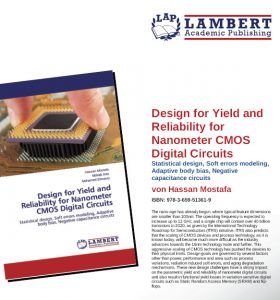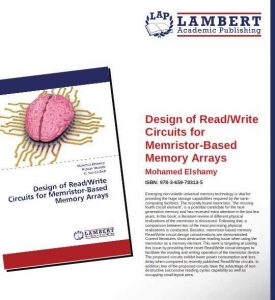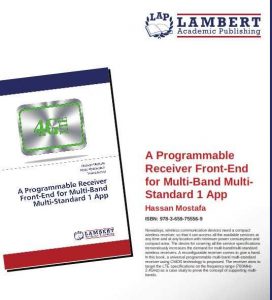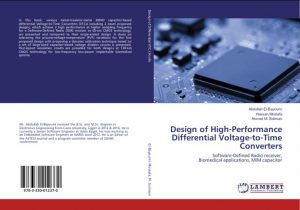Design for Yield and Reliability for Nanometer CMOS Digital Circuits

The nano-age has already begun, where typical feature dimensions are smaller than 100nm. The operating frequency is expected to increase up to 12 GHz, and a single chip will contain over 40 billion transistors in 2020, as given by the International Technology Roadmap for Semiconductors (ITRS) initiative. ITRS also predicts that the scaling of CMOS devices and process technology, as it is known today, will become much more difficult as the industry advances towards the 16nm technology node and further. This aggressive scaling of CMOS technology has pushed the devices to their physical limits. Design goals are governed by several factors other than power, performance and area such as process variations, radiation induced soft errors, and aging degradation mechanisms. These new design challenges have a strong impact on the parametric yield and reliability of nanometer digital circuits and also result in functional yield losses in variation-sensitive digital circuits such as Static Random Access Memory (SRAM) and flip-flops.
Design of Read/Write Circuits for Memristor-Based Memory Arrays

Emerging non-volatile universal memory technology is vital for providing the huge storage capabilities required by the nano-computing facilities. The recently found memristor,” the missing fourth circuit element”, is a potential candidate for the next-generation memory and has received extra attention in the last few years. In this book, a literature review of different physical realizations of the memristor is discussed. Following that, a comparison between two of the most promising physical realizations is conducted. Besides, memristor-based memory Read/Write circuit design considerations are demonstrated. Current literatures show destructive reading issue when using the memristor as a memory element. This work is targeting at solving this issue by providing three novel Read/Write circuit designs to facilitate the reading and writing operation of the memristor device. The proposed circuits exhibit lower power consumption and less delay when compared to recently published Read/Write circuits. In addition, two of the proposed circuits have the advantage of non-destructive successive reading cycles capability as well as occupying small layout area.
In this book, various metal-insulator-metal (MIM) capacitor-based differential Voltage-to-Time Converters (VTCs) including 2 novel proposed designs, which achieve a high performance at higher sampling frequency for a Software-Defined Radio (SDR) receiver at 65-nm CMOS technology, are presented and compared to their single-ended design. A study on tolerating the process-voltage-temperature (PVT) variations for the first proposed design with proposing a dynamic calibration technique based on a set of large-sized capacitor-based voltage dividers circuits is presented. Post-layout simulation results are provided for both designs at 130-nm CMOS technology for low-frequency low-power implantable biomedical systems.
Circuit Design Techniques for Microscale Energy Harvesting Systems

Power Management is considered one of the hot topics nowadays, as it is already known that all integrated circuits need a stable supply with low noise, a constant voltage level across time, and the ability to supply large range of loads. Normal batteries do not provide those specifications. A new concept of energy management called energy harvesting is introduced here. Energy harvesting means collecting power from ambient resources like solar power, Radio Frequency (RF) power, energy from motion…etc. The Energy is collected by means of a transducer that directly converts this energy into electrical energy that can be managed by design to supply different loads. Harvested energy management is critical because normal batteries have to be replaced with energy harvesting modules with power management, in order to make integrated circuits fully autonomous; this leads to a decrease in maintenance costs and increases the life time.
A Programmable Receiver for Multi-Band Multi-Standard Applications

Nowadays, wireless communication devices need a compact wireless receiver, so that it can access all the available services at any time and at any location with minimum power consumption and compact area. The desire for covering all the service specifications tremendously increases the demand for multi-band/multi-standard wireless receivers. A reconfigurable receiver comes to give a hand. In this book, a universal programmable multi-band multi-standard receiver using CMOS technology is proposed. The receiver aims to target the LTE specifications on the frequency range (700MHz-2.4GHz) as a case study to prove the concept of supporting multi-bands.

